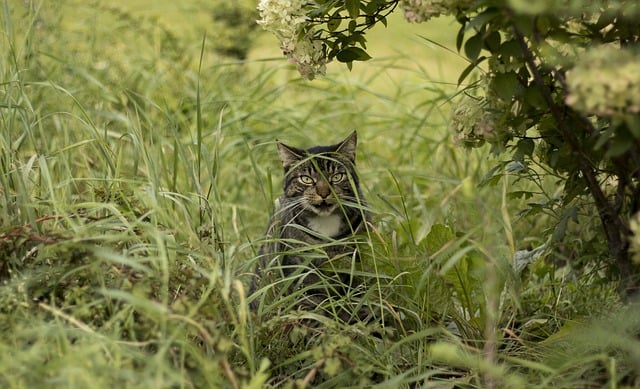University of Auckland PhD student Cathy Nottingham plans to spend the next few years tracking cats across rural NZ to figure out the answer.
Cathy says she’ll be looking at how the distribution and arrangement of vegetation is affecting feral cat movement on farms.
“Understanding this will both help manage biodiversity and also help farmers aiming to manage diseases such as toxoplasmosis on farms,” she says.
“If you travel overseas (especially to Australia) you are likely to hear a lot of sheep jokes about New Zealanders. This makes sense when you realise that nearly 40% of the total land area in New Zealand is sheep and beef farms (compared to our conservation estate which is 31%).
Cathy says these farms also contain 17% of the native vegetation in New Zealand, which means they are an excellent opportunity to improve our native biodiversity.

“It’s all well and good to enhance this connectivity to help the robin, tūī or kōkako disperse and move throughout the landscape, but is this enhanced connectivity also facilitating the movement and populations of invasive mammalian predators?”
The former nurse will be trapping feral cats on farms and fitting them with GPS collars. These will send her the cat’s location at regular intervals so she can see how individuals are moving around landscapes with differing levels of vegetation.
“I will also be looking at relative abundances and occupancy of other invasive mammal species on farms using camera traps, chew cards and wax tags,” Cathy says.
“This information will help us understand how other invasive species play a role in how feral cats are using the landscape.
Cathy will also be examining the diets of cats caught on farms under projects such as Cape to City in the Hawke’s Bay. She’s interested to see if what they eat is affected by how connected vegetation is in the landscape.
This project is a logical follow-on from her MSc, but the researcher is also passionate about the change it might bring.
“I think it would be awesome if one day we could expect to see kōkako or kiwi in our backyards and that’s not going to happen without control of invasive mammals.
“Predator Free New Zealand means that loads of stuff is being done in terms of rat, possum and mustelid control, but feral cats are also causing heaps of damage to New Zealand’s native biodiversity. I worked in an urban environment for my masters and it’s exciting to work in a very different landscape for my PhD – farms have lots to offer native biodiversity.”
Cathy hopes her project will provide information to help mitigate the impact of feral cats, particularly if farms are revegetated to enhance native animal movement.
Cathy’s study is part of the BioHeritage Tranche 1 project Farming & Nature Conservation.
